Ireland & Britain
England & Scotland
Travel Stories
Interests & Hobbies
Outdoors & Activities
Advice for Visitors
About My Ireland Tour
News & What's On

A Roman and Viking city where the history is etched into the narrow and ancient streets. Situated on the meandering banks of the River Ourse, York is one of the jewels in the crown of English tourism and a must-see destination on any tour of Britain. First established as a Roman stronghold in 71 AD, the city would take the name Jorvik 800 years later when the 'Great Heathen Army' of the Vikings sacked and occupied the city. It would remain an important military and cultural centre throughout a century of Viking occupation. During medieval times, York remained a stronghold city and a fortified defence against foreign invaders.
Our journey begins on York's City Walls, most complete example of medieval city defenses still standing in England today (find the location in Google Maps here). Originally constructed by The Romans to provide a base for the Empire's Ninth Legion, these stone fortifications provide shelter and protection for all those who lived in 'Eboracum'. That was the name the Romans gave to a town of growing military and cultural significance which would later come to be known as York. Today, the majority of the walls are accessible to the public and are free to walk upon, with restored pathways and safety railings. If time allows, walking the full circuit provides a comprehensive tour around the historic city centre and offers an insightful panorama of York's rich past.


There are few better examples of Gothic architecture in all of England than York Minster. The construction we see today was started in the 1220s and only reached completion shortly after 1470, making this a unique and impressive portfolio of architecture and design spanning 250 years. The vastness of the scale on the one hand, combined with the minuteness of the detail on the other, combine to create a masterpiece that attracts up to 700,000 visitors each year. Atop 275 steps of narrow and spralling stone, you will find The Central Tower — the highest point in all of York (it's large enough to fit the Leaning Tower of Pisa inside). Other notable attractions include The Chapter House, Undercroft, Treasury and Crypt. To get the most out of your visit, book a guided tour in advance...
The York Museum Gardens are situated on the grounds of St. Mary's Abbey, a once-powerful Benedictine abbey ruined during the dissolution of the monasteries under Henry VIII. The gardens and the museum within them are steeped in history, offering a peaceful retreat with a backdrop of hallowed antquity. The museum itself dates back to 1830 and it holds an impressive collection of artefacts that tell the story of York and its surroundings from prehistoric times to the medieval period. Highlights include the Cawood sword, the York Helmet, and extensive collections of Roman and Viking treasures. Explore the museum, the gardens or both depending on your time availability and interests. Book museum tickets here...


It is hard to imagine a more quintessentially British experience than having afternoon tea in Bettys of York. Advanced booking is essential in this treasured institution which has been a landmark on St. Helen's Square since it opened in 1936. Afternoon tea is a treasured English tradition in which a pot of tea is served as an accompaniment to an assortment of sweet and savoury treats, presented on a tiered stand. Once you have chosen your blend of tea, you will be invited to choose your preferred sandwiches, scones, pastries and cakes. Few things could be more British than an hour spent indulging in afternoon tea.
Walk along Davygate past York Information Centre & Gift Shop (a good spot to find souvenirs), before turning left onto mpson's Sq, which follows on to Church Street and then Goodramgate, where you will find Holy Trinity Church, Goodramgate — one of York's most historic and well-preserved medieval churches. It has undergone various modifications over the centuries but, even today as an active place of worship, it retains much of its original structure and charm. Nestled away from the bustling streets of York, the church and its surroundings offer a peaceful retreat. Its position, hidden behind shops and accessed through one of York's famous 'snickelways' (a narrow passageway), enhances its medieval charm and mystery.


The Shambles is one of England's most iconic streets, famous for its beautifully preserved medieval architecture and its atmospheric charm. Often cited as an inspiration for Diagon Alley in the Harry Potter series by J.K. Rowling, this narrow passageway offers a curious glimpse into a time long forgotten. The name "Shambles" originates from the Anglo-Saxon word "Shamel" meaning "bench" or "stall". Historically, The Shambles was lined with butcher shops, which displayed their goods on these benches outside. The meat hooks and wide windowsills from this era are still visible on some of the buildings you will see.
JORVIK Viking Centre invites you to travel back to the year 975 AD and discover the world of the Viking invaders. Over 30 years, 20 million tourists and visitors have immersed themselves in the Centre's interactive experience where you can walk the Viking streets, enter their dwellings, hear the sounds and smell the smells. Jorvik houses over 800 viking artefacts including tools, textiles, coins, and personal items which offer a unique glimpse into the daily lives of the people who lived here over a thousand years ago. Book your visit here...


Clifford's Tower was built after the Vikings had left Britain. Following the invasion by William the Conqueror, it was built in 1068 and would serve as a centre for York's defense and administration over the centuries. The tower is notable for its unusual four-lobed design, rare in England, which provides a unique appearance and structural advantage. As a work of military architecture, this design was far ahead of its time, and the unusual shaping is one of the main reasons for the tower's enduring fascination. Clifford's Tower is the site of one of the most tragic events in York's history, the massacre of its Jewish community in 1190. The Jewish residents of York, seeking protection from a mob, took refuge in the tower which was then set on fire, leading to the loss of many lives. This event is a significant part of the tower's history and is commemorated today.
If the weather is nice, take a stroll along the banks of the River Ourse to Rowntree Park. Opened in 1921, Rowntree Park was gifted to the city of York by the Rowntree family, famous in Britain for their chocolate manufacturing in the city. It was offered as a memorial to the Rowntree Company employees who lost their lives during World War I. The park spans over 30 acres, featuring extensive green lawns, mature trees and beautiful flower gardens. When you're ready for a rest, find a bench near the pond and reflect on the rich and varied history you have learned about today.

Take in the essence of captivating Ireland as you embark on an unforgettable 8-day adventure, immersing yourself in the Emerald Isle's beauty and charm.
Experience all that is Ireland in this 10-day adventure. Ireland's best-loved attractions and its best-kept secrets, including the Wild Atlantic Way.
Experience the true essence of Ireland in under a week. Ireland's unmissable destinations and the Wild Atlantic Way in one unforgettable tour.
Discover the Island of Ireland, North and South with this unforgettable 14-day tour. Spend 4 days in Ulster, and 10 more in Eire.
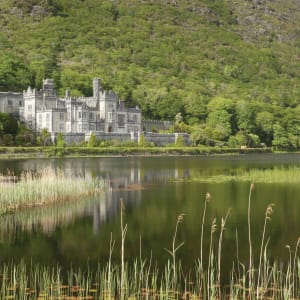
Live like royalty for 10 days across Ireland, staying in real Irish castles and country manors. Enjoy the finest all-inclusive tour Ireland has to offer.
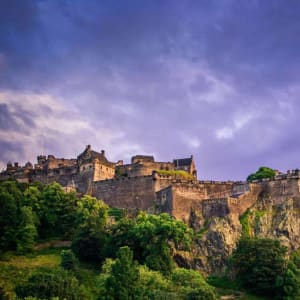
Discover the best of Ireland and Scotland with this unforgettable 14-day tour. Compare the cultures of these historic Gaelic nations during a magical fortnight.

Explore the wonders of Ireland and Scotland on this remarkable 9-day tour. Immerse yourself in the rich cultures of these historic Gaelic nations as you embark on a captivating journey.
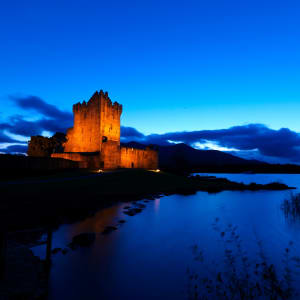
An exclusive tour capped at max. 8 guests, travelling through the idyllic scenes of The Wild Atlantic Way. Including an overnight stay in an Irish castle.
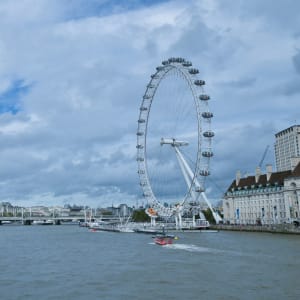
Experience a once-in-a-lifetime 18-day adventure as you behold the most famous and captivating attractions that Ireland, Northern Ireland, Scotland, and England have to offer.
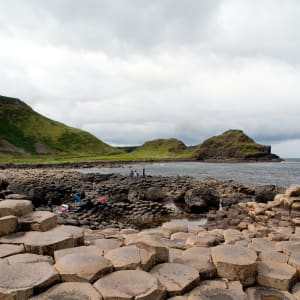
Northern Ireland's natural beauty awaits on this six-day fully-inclusive tour of Ulster. Picturesque towns, untamed coastlines and friendly locals await.
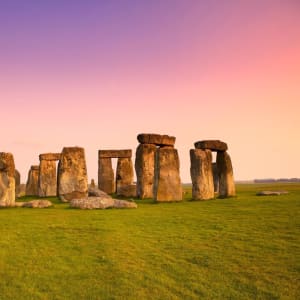
Experience Britain and Ireland in just ten days — from London and Stonehenge through Cardiff, then across the sea to Waterford, Cork and Dublin. A highlights journey that blends castles, coastlines and culture at the perfect pace.
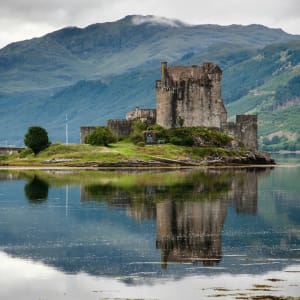
Embark on a unique and intimate journey through the Celtic heartlands of Ireland and Scotland on this exclusive tour designed for a maximum of 8 guests.
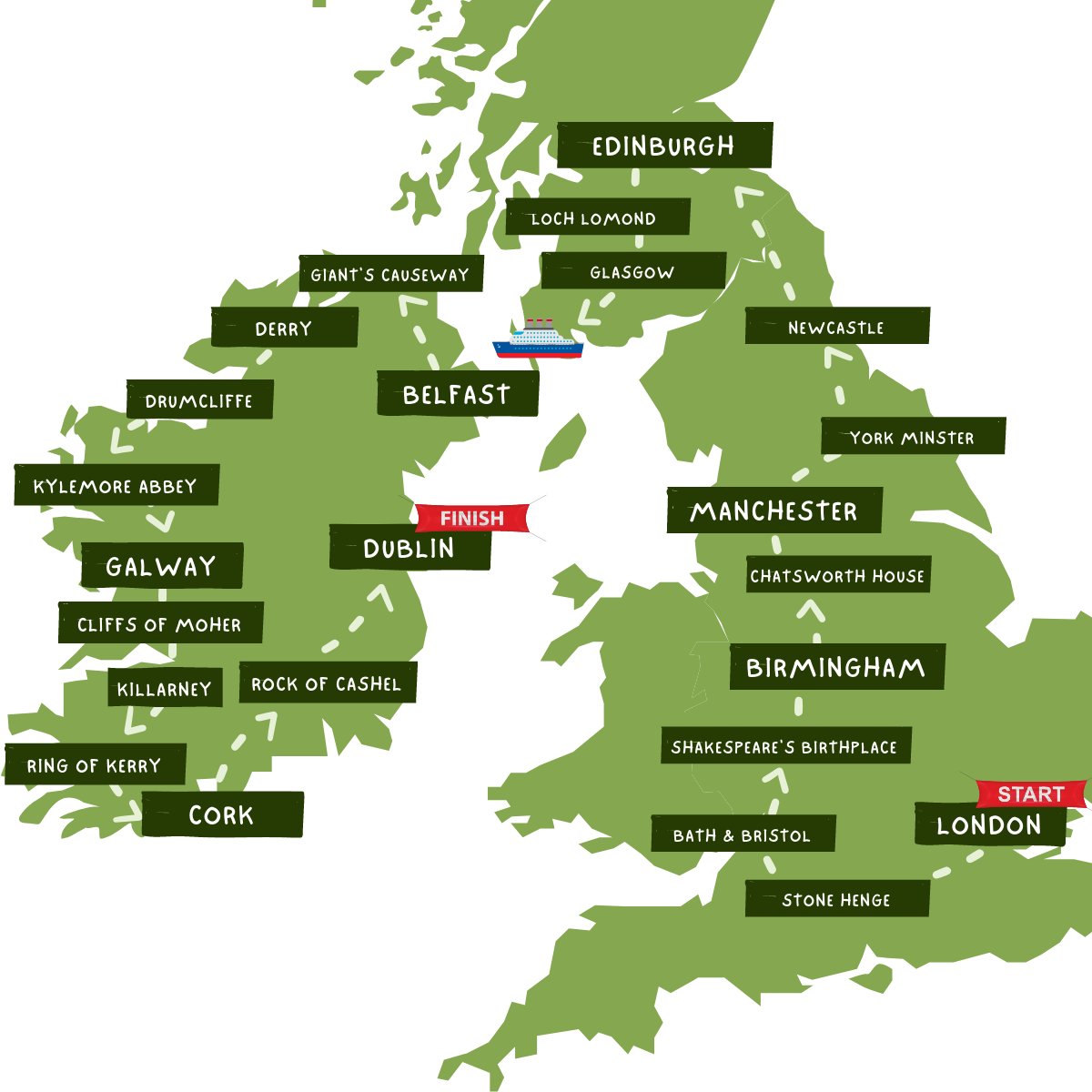
Experience a once-in-a-lifetime 18-day adventure as you behold the most famous and captivating attractions that Ireland, Northern Ireland, Scotland, and England have to offer.

Experience Britain and Ireland in just ten days — from London and Stonehenge through Cardiff, then across the sea to Waterford, Cork and Dublin. A highlights journey that blends castles, coastlines and culture at the perfect pace.
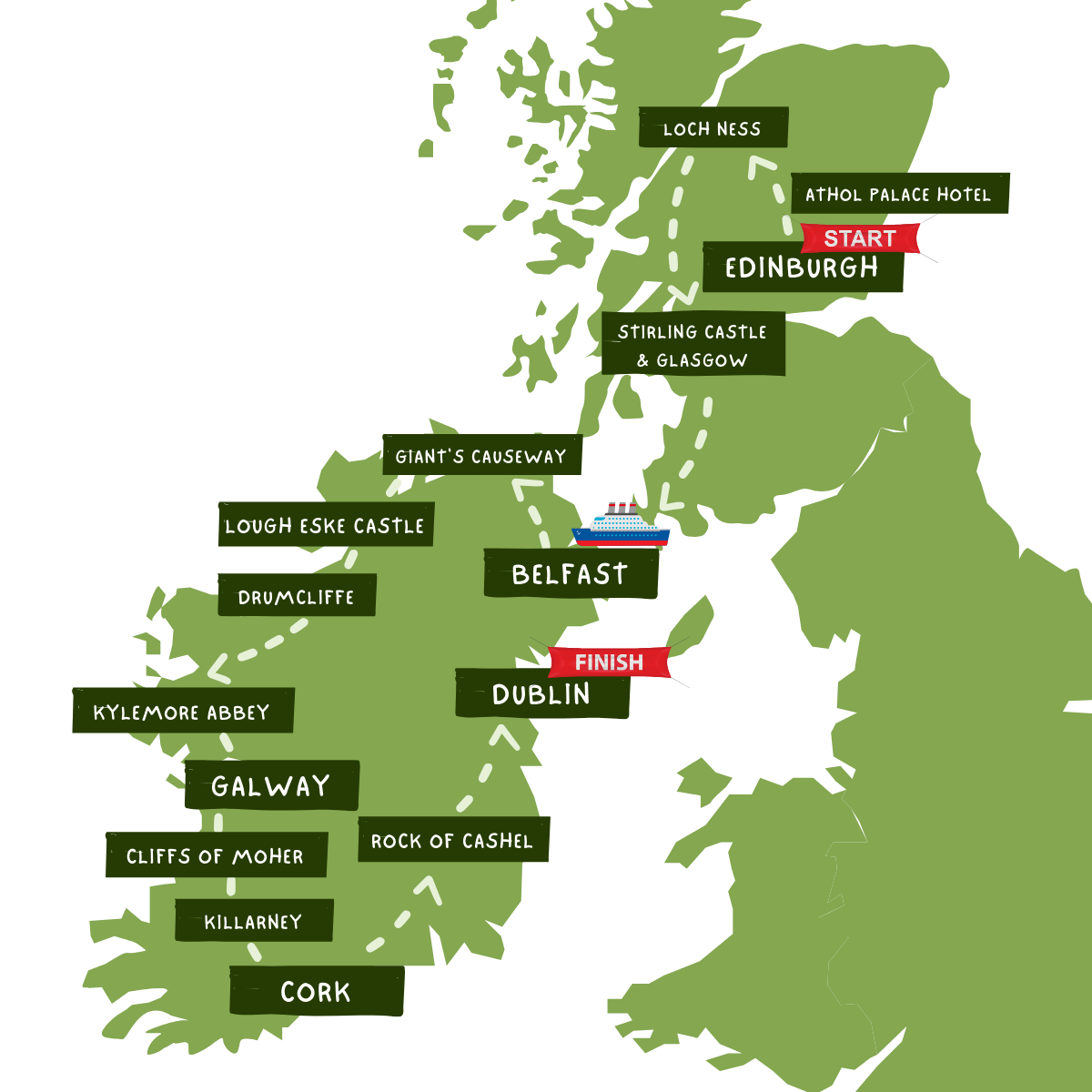
Discover the best of Ireland and Scotland with this unforgettable 14-day tour. Compare the cultures of these historic Gaelic nations during a magical fortnight.
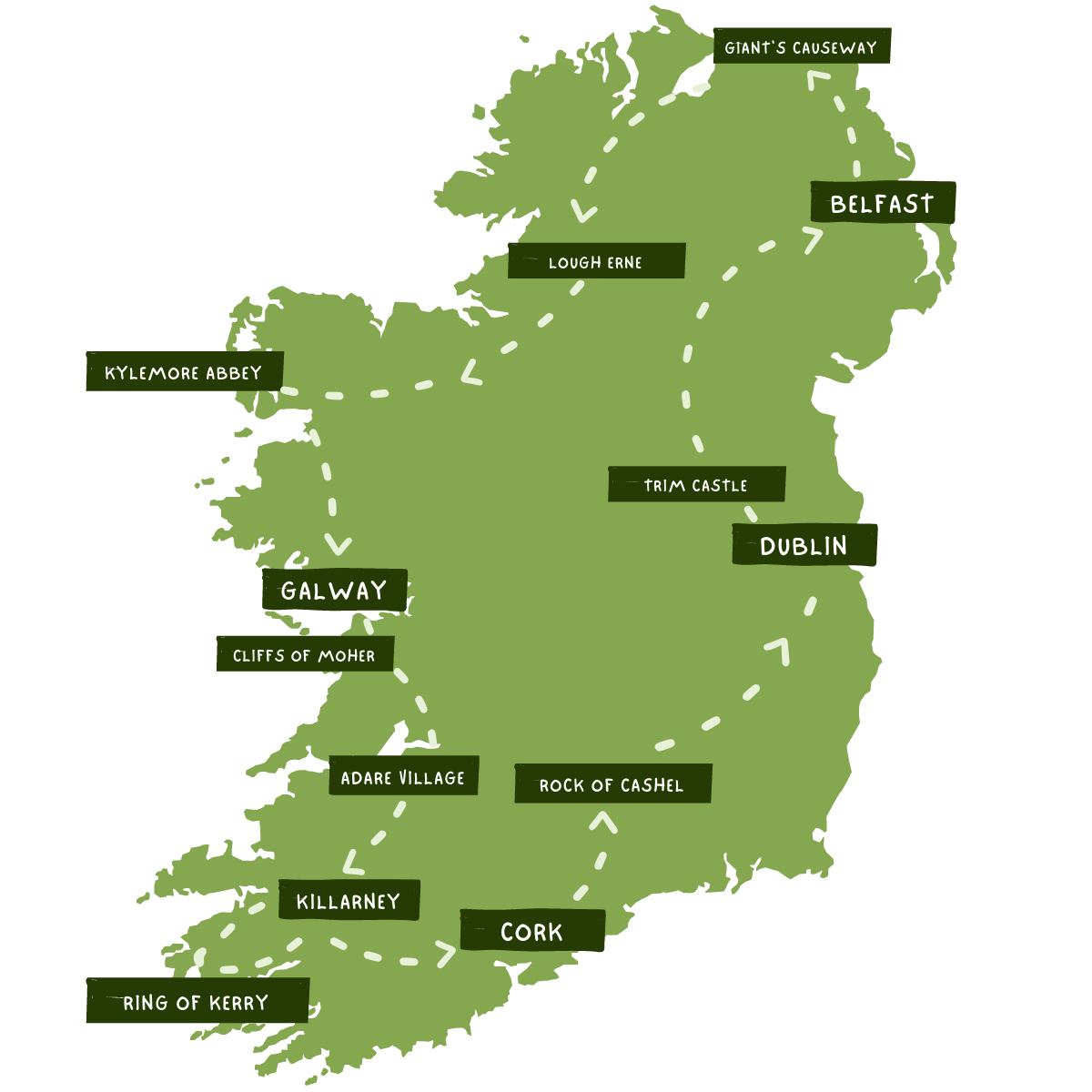
Discover the Island of Ireland, North and South with this unforgettable 14-day tour. Spend 4 days in Ulster, and 10 more in Eire.
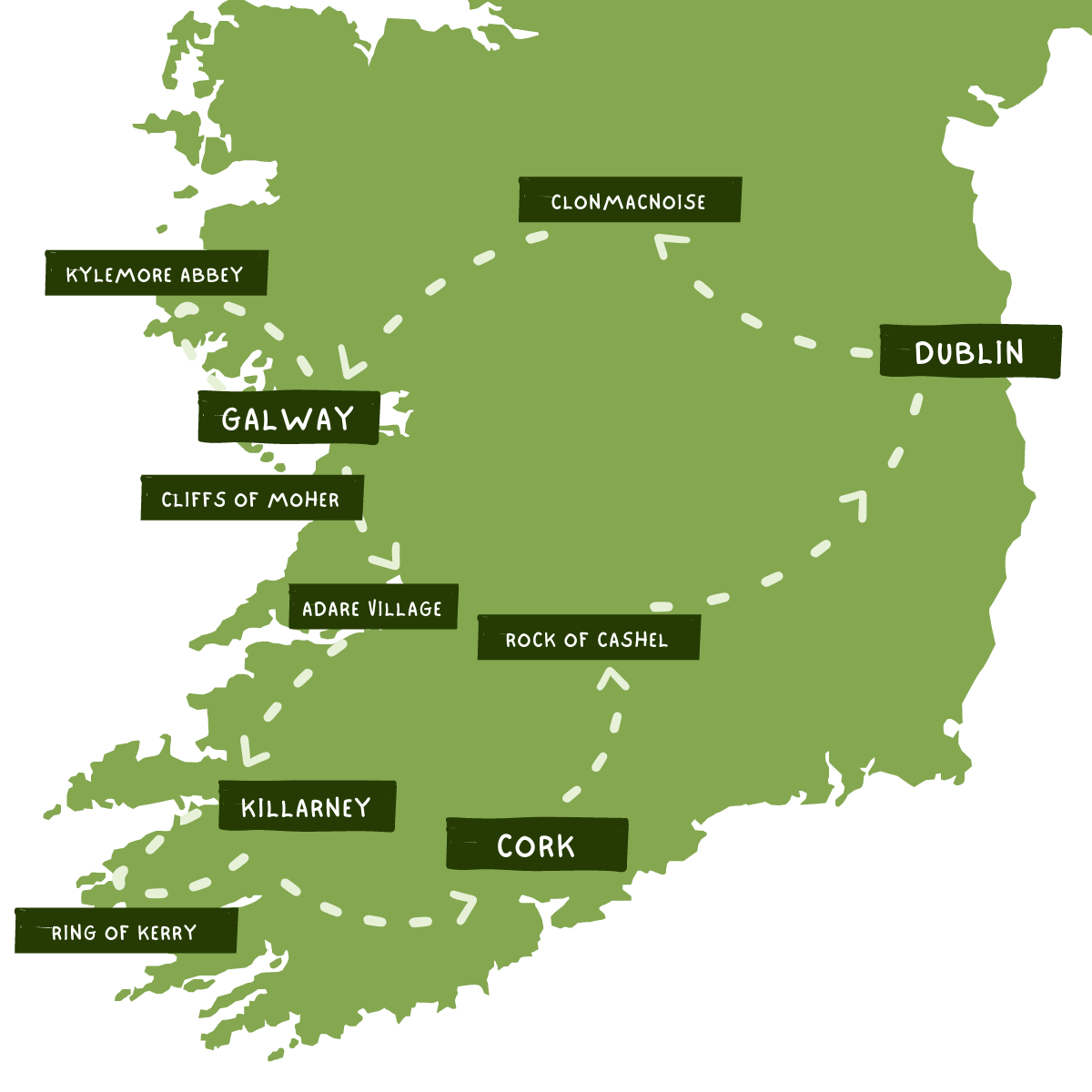
Experience all that is Ireland in this 10-day adventure. Ireland's best-loved attractions and its best-kept secrets, including the Wild Atlantic Way.
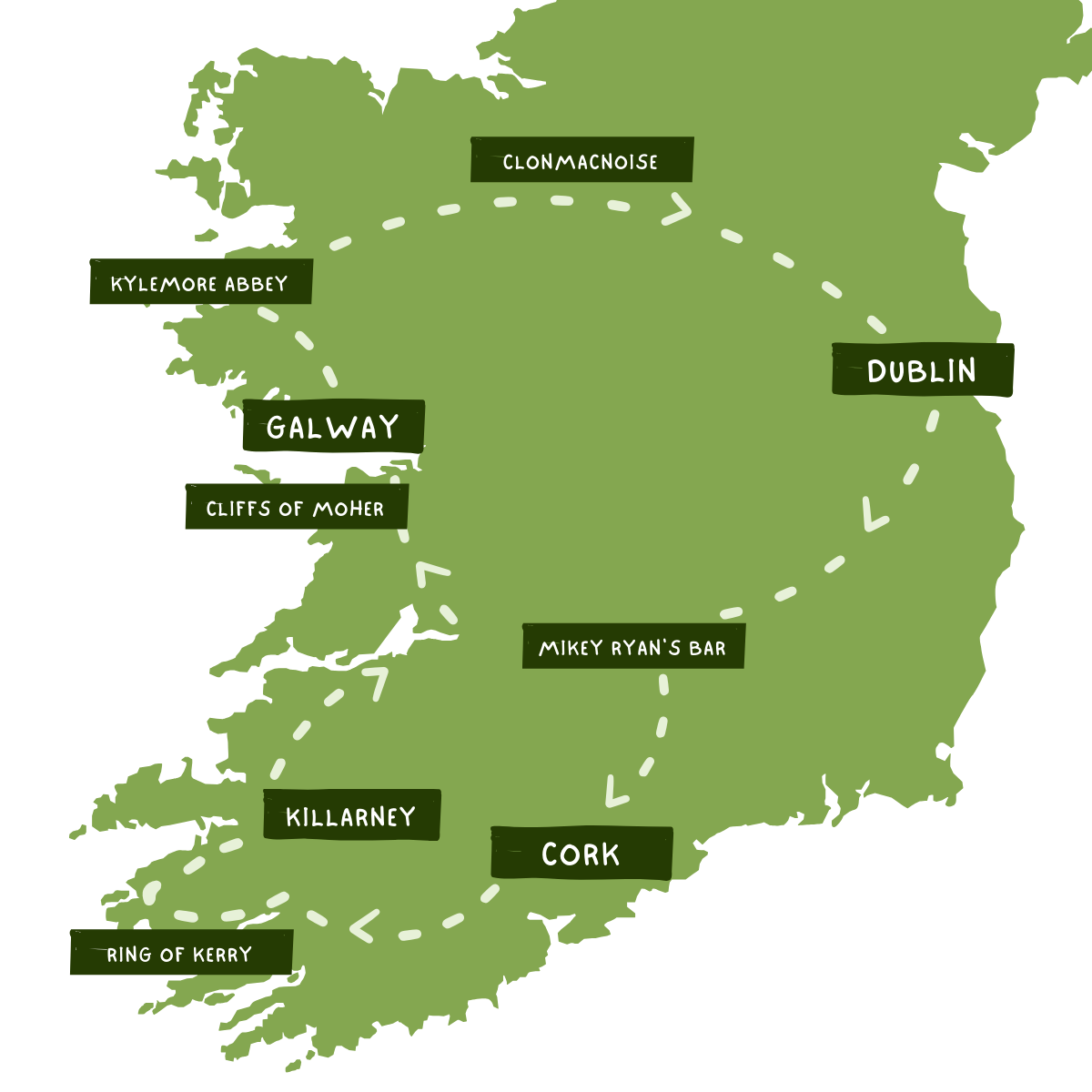
Take in the essence of captivating Ireland as you embark on an unforgettable 8-day adventure, immersing yourself in the Emerald Isle's beauty and charm.
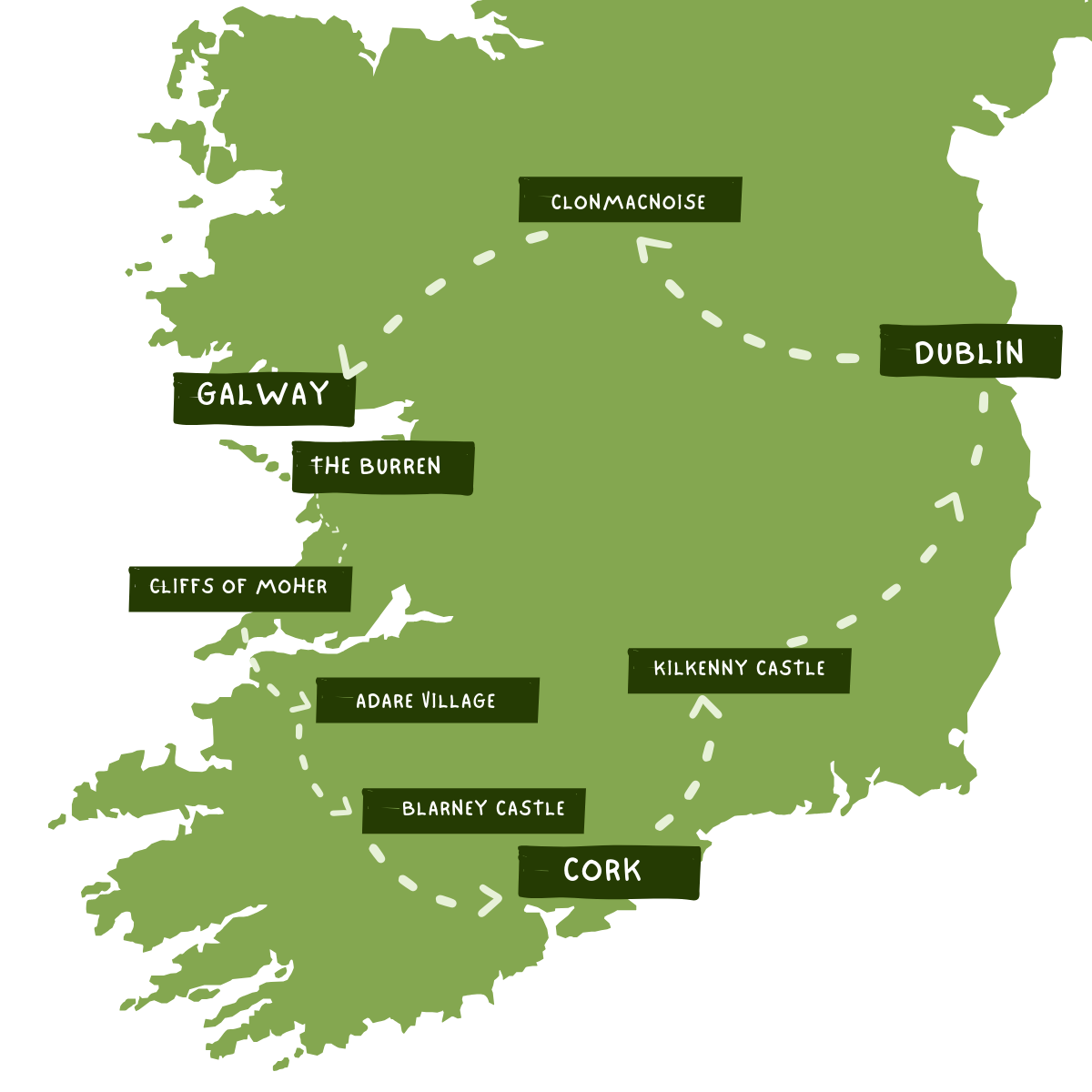
Experience the true essence of Ireland in under a week. Ireland's unmissable destinations and the Wild Atlantic Way in one unforgettable tour.
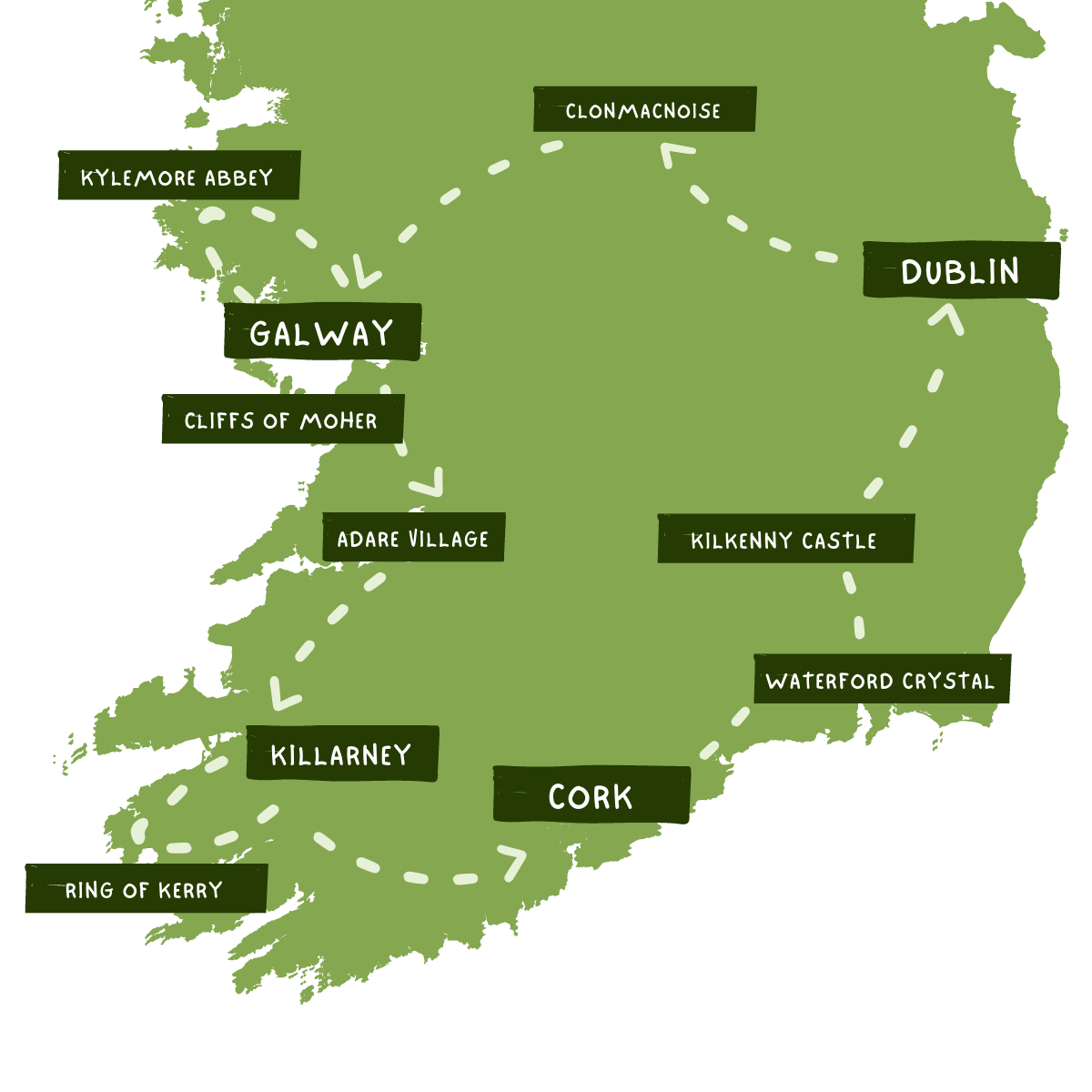
An exclusive tour capped at max. 8 guests, travelling through the idyllic scenes of The Wild Atlantic Way. Including an overnight stay in an Irish castle.
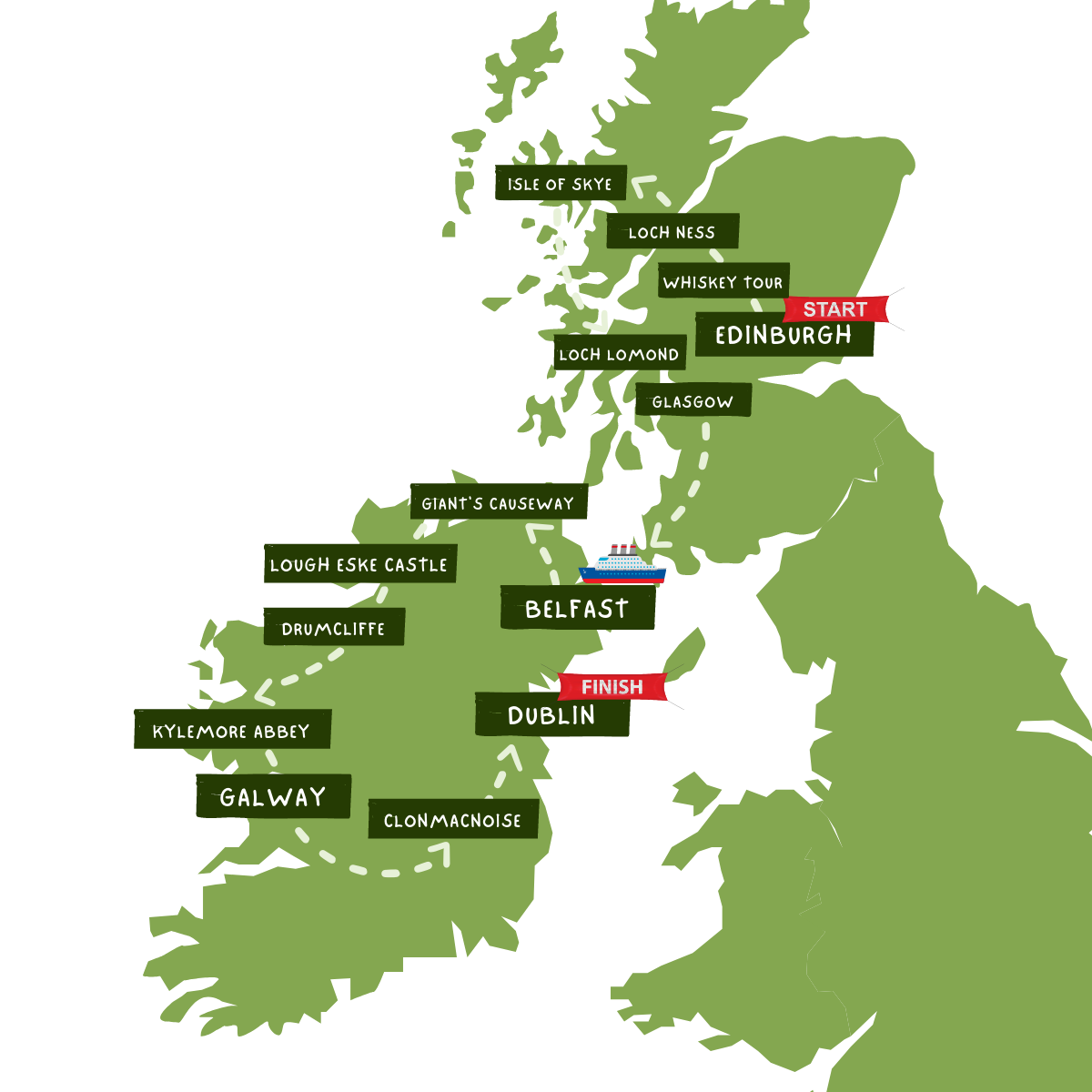
Embark on a unique and intimate journey through the Celtic heartlands of Ireland and Scotland on this exclusive tour designed for a maximum of 8 guests.
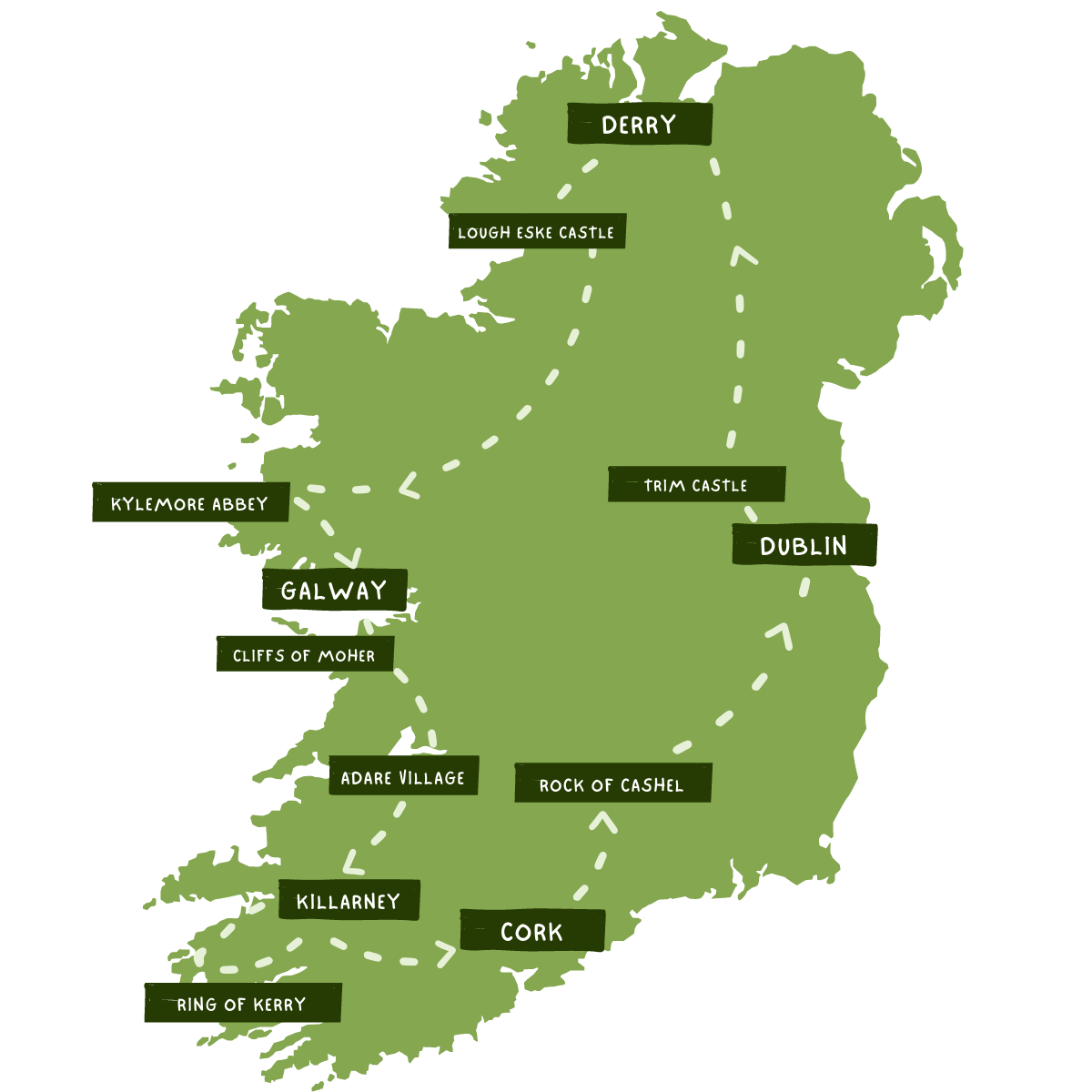
Live like royalty for 10 days across Ireland, staying in real Irish castles and country manors. Enjoy the finest all-inclusive tour Ireland has to offer.
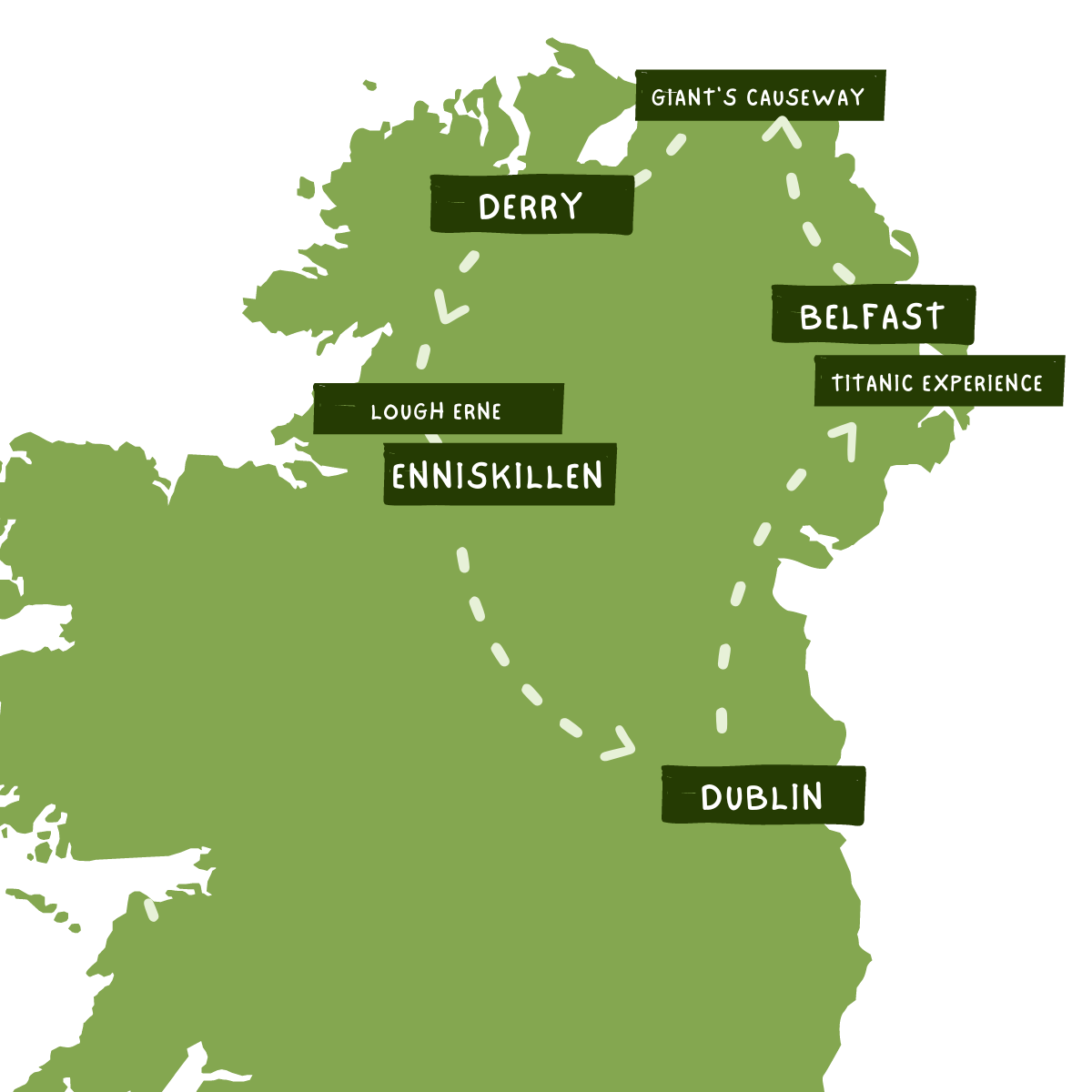
Northern Ireland's natural beauty awaits on this six-day fully-inclusive tour of Ulster. Picturesque towns, untamed coastlines and friendly locals await.
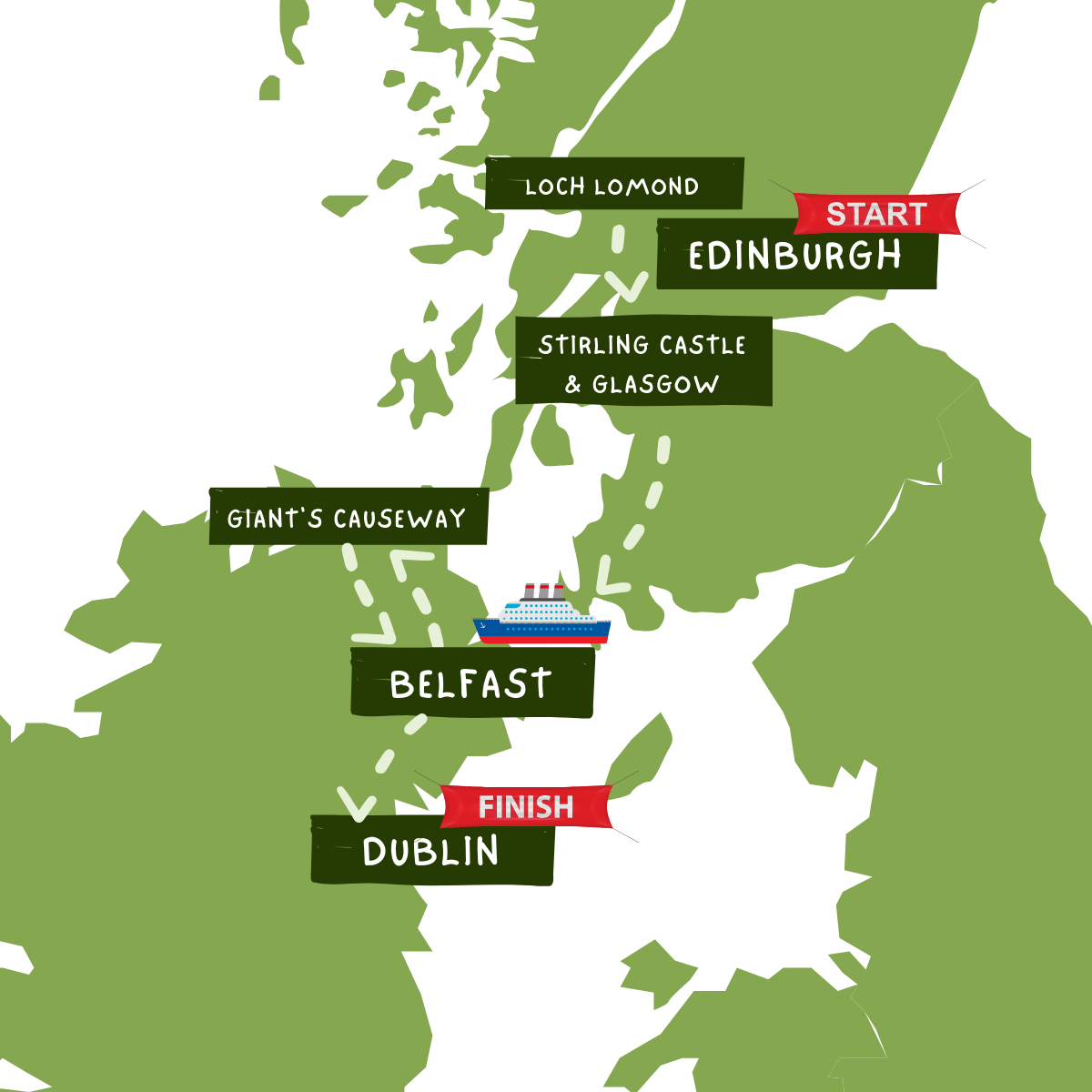
Explore the wonders of Ireland and Scotland on this remarkable 9-day tour. Immerse yourself in the rich cultures of these historic Gaelic nations as you embark on a captivating journey.